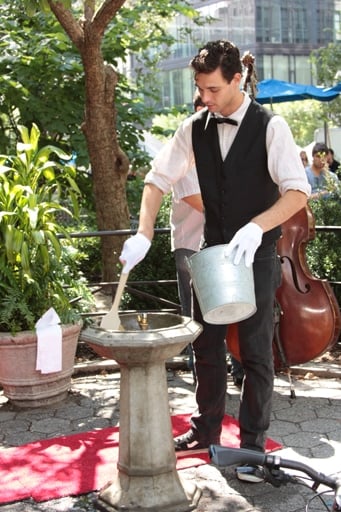 The invention of the modern drinking fountain in 1906 by Luther Haws was a significant innovation that improved public spaces dramatically by helping to deliver sanitary drinking water to anyone. Today, the number of public drinking fountains is decreasing, and it is leading to problems. This past month, the Washington Post published an article that explains why this is happening, and why it’s not good. Below is an introduction to the article, which can be read in full here at the Washington Post.
The invention of the modern drinking fountain in 1906 by Luther Haws was a significant innovation that improved public spaces dramatically by helping to deliver sanitary drinking water to anyone. Today, the number of public drinking fountains is decreasing, and it is leading to problems. This past month, the Washington Post published an article that explains why this is happening, and why it’s not good. Below is an introduction to the article, which can be read in full here at the Washington Post.
“The event, called ‘Respect the Fountain,’ was staged by a group with an unlikely mission — to make water fountains cool again.
Fountains were once a revered feature of urban life, a celebration of the tremendous technological and political capital it takes to provide clean drinking water to a community.
Today, they’re in crisis. Though no one tracks the number of public fountains nationally, researchers say they’re fading from America’s parks, schools and stadiums. ‘Water fountains have been disappearing from public spaces throughout the country over the last few decades,’ lamented Nancy Stoner, an administrator in the Environmental Protection Agency’s water office. Water scholar Peter Gleick writes that they’ve become ‘an anachronism, or even a liability.’ Jim Salzman, author of Drinking Water: A History, says ‘they’re going the way of pay phones.’
Even the International Plumbing Code, followed by builders in most American cities, has signaled that the fountain is out of style. In the 2015 edition of the manual, which lays out recommendations on matters such as the number of bathrooms an office should have and how pipes should work, authors slashed the number of required fountains for each building by half.
This loss isn’t a result of some major technological disruption. While U.S. consumption of bottled water quadrupled between 1993 and 2012 (reaching 9.67 billion gallons annually), that’s more a symptom than a cause. What’s changed in the past two decades is our attitude toward public space, government and water itself. ‘Most people over the age of 40 have really positive stories of drinking fountains as kids,’ says Scott Francisco, who helped organize the Union Square event with Pilot Projects, an urban design company. ‘The sense today, though, is that they’re dangerous, they’re not maintained and they’re dirty.’
In short, we don’t trust public fountains anymore. And it’s making us poorer, less healthy and less green.”
To read more visit the Washington Post



